For the race in 2015 the 15-member team again partnered with Kipp & Zonen. Driving on solar power requires precise measurements of PV panel efficiency and solar irradiance. In the past we had access to CMP6 pyranometers, but for the most recent race Kipp & Zonen supplied us with brand new SMP10 Smart pyranometers to optimise the performance of the car, Nuna8.
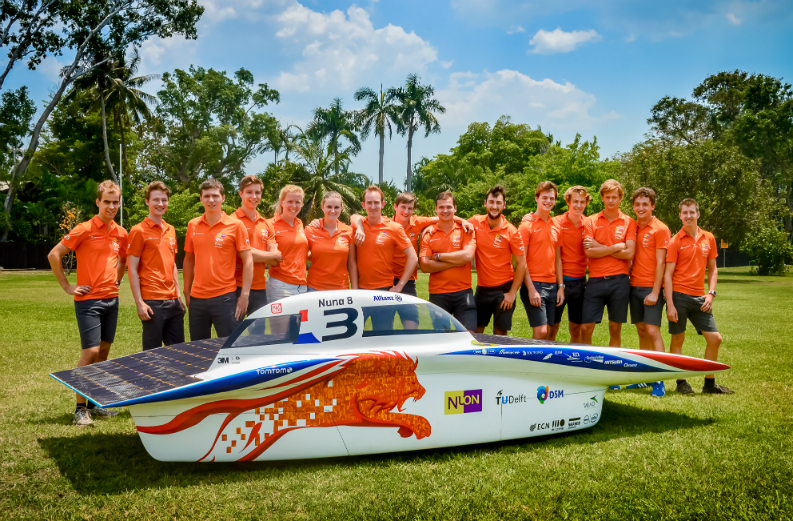 The Nuon Solar Team with Nuna8
The Nuon Solar Team with Nuna8
Telemetry
New sensors are always fun to play around with, but in order to be useful for us during the preparation for the race, and during the race itself, they need to be integrated into our Mission Control App. This is a Java® application that runs in the support vehicle driving behind Nuna8. It combines the data from all the sensors in Nuna, sent over WiFi, with data from sensors mounted on the support vehicle; such as an anemometer, GPS receiver and a pyranometer.
The Mission Control App combines and visualises all the received data, enabling us to monitor the performance of Nuna8 and compare it to the strategy predictions.
Our previous Kipp & Zonen CMP6 pyranometers, connected to a laptop with a LabJack analogue-to-digital converter, were already integrated into this application. However, our brand new SMP10 pyranometers could be connected directly to a computer using the RS-485 Modbus® interface. This eliminates the need for a converter, providing better accuracy and more information on the measurements made by the pyranometer.
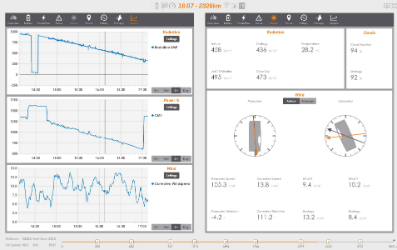 Mission Control App data visualisation
Mission Control App data visualisation
Because of the extensive documentation of the Modbus® implementation in the SMP10 provided by Kipp & Zonen, integrating it into our Mission Control App was quite easy. Before we knew it we had solar irradiance readings in the app from our new SMP10 pyranometers through the Modbus® interface!
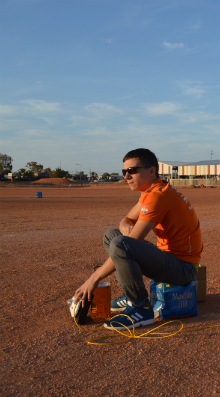 Pointing a SMP10 at the sun near the horizon
Pointing a SMP10 at the sun near the horizon
Testing
With the pyranometers working in our App we headed to Australia ready for some testing. We first flew to Adelaide, the finish of the Bridgestone World Solar Challenge. From there we made our way up to Darwin, to prepare the convoy and experience the route the other way around.
During this trip up, the SMP10’s were already in use. In the middle of the desert we collected morning and evening solar irradiance data. With one SMP10 pyranometer pointed at the sun and the other at the zenith, we gathered data on the diffuse fraction of the solar irradiance in the morning and evening.
During the day, under a clear sky, the difference between global horizontal radiation and the direct incoming radiation from the sun is a relatively easy sinusoidal calculation, as the fraction of diffuse sky radiation is relatively small compared to the direct radiation. But, in the early morning and late evening the radiation has to travel a longer path through the atmosphere before it reaches the surface, thus increasing the amount of diffuse radiation, which makes this diffuse fraction relevant for predicting the power generated by our PV panels.
This pyranometer data was very valuable information, as Nuna8 is stationary between 5pm and 8am and during this period we aim our charging solar panels at the sun. During our stay in Darwin in preparation for the Bridgestone World Solar Challenge one of our CMP6 pyranometers was placed stationary on the roof of our workshop. The data that we gathered in this fashion was compared to the weather predictions of various meteorological bureaus and this provided us with some new insights in terms of reliability and bias of these weather predictions.
These weeks before the race were designated for performance tests of Nuna8. The power usage of the car driving at various speeds and with both head and tail winds was extensively measured by driving on the Cox Peninsula Road, near our workshop in Darwin. The performance of the solar array on Nuna8 was measured as well, using an SMP10 pyranometer to calculate the efficiency of the PV panels. Both in static tests at our workshop and while driving on the Cox Peninsula Road these pyranometers provided us with accurate measurements of the solar irradiance.
While driving, the fast response time of the SMP10 provided accurate measurements, even when trees or small clouds would partially shade the road. Together with the excellent temperature compensation this was a huge improvement over our older CMP6 pyranometers. This accuracy enabled us to map the temperature dependence of the solar panels, and even the efficiency increase after cleaning the panels was measurable.
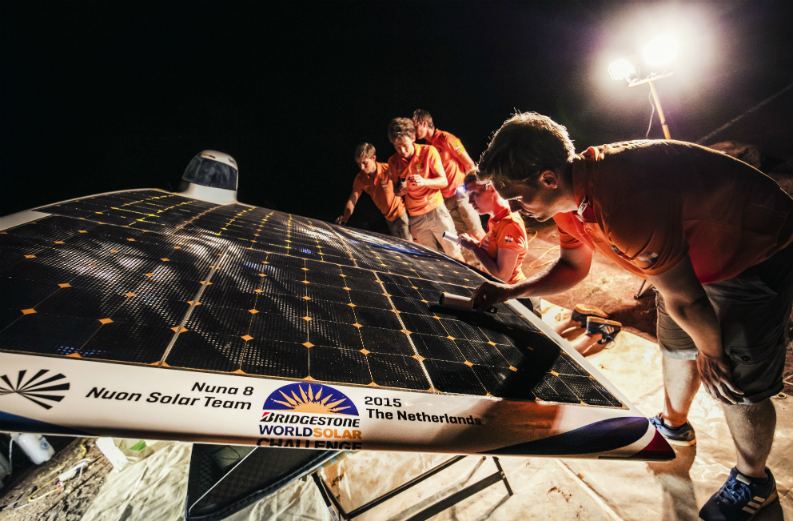 Cleaning the PV panels during an overnight stop
Cleaning the PV panels during an overnight stop
The race
To calculate the speed that we can drive during the race we take the models from our testing trajectory and combine these with weather predictions for the route that we will be driving. This gives us an optimal speed profile, if the models of Nuna8 and the weather predictions are correct. If our car model turns out to be incorrect, we will notice this quite easily in the data that we get from Nuna8, visualized in our Mission Control App, and we can adjust the model with new data.
To validate if the weather predictions are correct, we use an anemometer for the wind and our two SMP10 pyranometers for the solar irradiance. With these sensors mounted on three vehicles, we have real-time data from moving weather stations. Combining this data gives us insights into the performance of the weather models and enables us to correct them in real-time and, if necessary, correct the Nuna8 speed accordingly.
In the end our strategy proved to be very successful, as we won the Bridgestone World Solar Challenge 2015 and our Smart Kipp & Zonen pyranometers certainly contributed to this result!
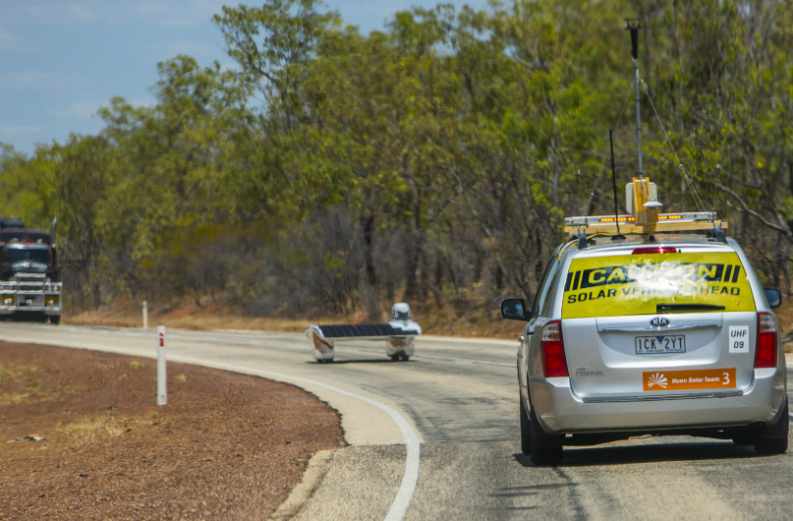 Support vehicle with anemometer and SMP10 pyranometer
Support vehicle with anemometer and SMP10 pyranometer
Pictures by Hans-Peter van Velthoven